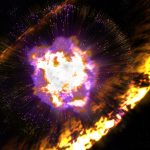Key takeaways
- Scientists have successfully transmitted high-fidelity quantum information over 44 kilometers (27 miles), a significant step towards a quantum internet.
- The team achieved over 90% data correctness, showing that long-distance quantum data transmission can be both accurate and reliable.
- Quantum internet uses qubits, particles that can exist in multiple states. When entangled, their states are interconnected, allowing instant data reflection between distant sites.
- Transmitting entangled qubits over long distances without interference is difficult. This experiment marks a new record for effective quantum information teleportation.
- This breakthrough brings us closer to city-sized quantum networks. Quantum internet promises massive speed, processing power, and enhanced security, complementing the traditional internet.
Scientists are getting closer to creating a super-secure, super-fast quantum internet: they can already ‘teleport’ high-fidelity quantum information over 44 kilometers (27 miles).
Data quality and transmission distance are both critical when it comes to creating a true, functional quantum internet, and advancement in any of these areas is reason for celebration among those developing our next-generation communications network.
In this scenario, the team achieved higher than 90% fidelity (data correctness) with their quantum information while also transmitting it over enormous fibre optic networks akin to those that serve as the backbone of our current internet.
“We’re thrilled by these results,” says physicist Panagiotis Spentzouris of the Fermilab particle physics and accelerator laboratory at the California Institute of Technology.
“This is a key achievement on the way to building a technology that will redefine how we conduct global communication.”
Quantum internet technology employs qubits, which are unmeasured particles that stay suspended in a variety of potential states, much like spinning dice that have yet to settle.
When qubits are introduced to one another, their identities become ‘entangled’ in ways that become clear after they are measured. Consider these entangled qubits to be a pair of dice; while one can land on any number, they are both guaranteed to sum to seven regardless of their distance. Data from one site is quickly reflected in another.
By cleverly entangling three qubits, one particle’s state may be forced to adopt the ‘dice roll’ of another via their mutually entangled partner. In quantum terms, this is equivalent to transforming one particle into another and teleporting its identity over a distance in a blink.
However, entanglement must be formed initially and then maintained when the qubits are transported to their final destination via optical fibres (or satellites).
The fragile, sensitive nature of quantum information makes it difficult to beam entangled photons across great distances without interference. Longer optical fibers merely allow for more noise to interfere with the entangled states.
The entire length of fiber needed to channel each cubit added up to 44 kilometers, marking a new limit on how far we can transfer entangled qubits while still effectively teleporting quantum information.
It has never been proved to function over such a large distance with such accuracy, and it puts a city-sized quantum network closer to reality, despite the fact that years of effort still to be done.
“With this demonstration we’re beginning to lay the foundation for the construction of a Chicago-area metropolitan quantum network,” Spentzouris said.
Quantum entanglement and data teleportation are complicated sciences, and even specialists don’t completely grasp how they may be employed in a quantum network. However, each proof of concept we receive, such as this one, brings us one step closer to realizing this network.
In addition to offering massive increases in speed and processing capacity, a quantum internet would be very secure – any hacking effort would be equivalent to shattering the lock being picked. For the time being, experts believe quantum internet networks will function as specialized extensions of the traditional internet rather than a total replacement.
Researchers are approaching quantum internet difficulties from many perspectives, which is why you’ll find a wide range of distances cited in studies – they’re not all measuring the same technology, using the same equipment, or testing the same standards.
What distinguishes this work is the precision and distance of the quantum entanglement teleportation, as well as the ‘off the shelf’ equipment employed; it should be quite simple to scale up this technique using the gear we already have in place.
“We are very proud to have achieved this milestone on sustainable, high-performing, and scalable quantum teleportation systems,” adds physicist Maria Spiropulu of Caltech.
The findings have been reported in PRX Quantum.


